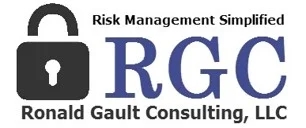Organizations with immunity to security attacks
posted Jul 31, 2014, 6:56 PM by Jesse Glidden
In April of 2014, I attended an ISSA webinar (sponsored by Ixiacom.com) that discussed organizations that seem immune to security attacks. I'll share a few of salient points.
Risk Analysis
It's not about the resources, it's about a risk-based effort, because you will never have adequate resources
Take a risk-based approach.
Ask yourself these three questions:
What is the risk?
Is it the highest priority risk?
What is the most cost-effective method of reducing risk?
Threats: offense must inform the defense
Risk = Threat * Vulnerability
Threat ~ Likelihood
Vulnerability ~ Impact
What are the current risks an organization faces?
Data Theft
Long-term compromise
Loss of Command and control capability
Loss of Competitive Advantage
What are some of the current threats?
Trusted insiders
Supply Chain threats (i.e., Target)
What are some of the vulnerabilities?
Lack of segmentation (access controls, permissions, etc.)
Control and minimize damage by “heavily segmenting" data systems
Prevent access to critical data, or more critical data, and identify where that data is
Systems not sufficiently hardened
For instance, who has direct access to PCI POS systems?
So you need to know a few things:
What is your critical data, and where is it located in your organization?
What servers is your data on?
You need an accurate, current network diagram
Consider this exercise:
Identify all critical data (assets), and the business processes that support it.
List all threats, starting with the highest likelihood of success to your organization
List all vulnerabilities, starting with the highest impact, based on threats that are tied to your critical assets
Number 3 in the above list becomes your action plan, this is where you focus your efforts in the upcoming short-term. [This is what we at RGC consider a risk analysis, with a risk management plan].
Targeting
Be sure to differentiate between the source of the threat, and the cause of damage. Many believe that the biggest source of threats out there today are external: foreign adversaries, competitors, etc. Yet, cause of damage is often an “accidental insider”, who is tricked into doing something they would not normally do if they knew the impact of their action, or if they were even aware of what they were doing. Therefore, good organizations can minimize this likelihood with "awareness training". Organizations often overdedicate resources to the external threat, while underdedicating resources to insider, supply chain, internal unpatched systems, etc. type of threats.
What are the classic core characteristics of an attack?
Target an individual/system
Deliver payload to system
Upload files to the system
Run processes
Survive a reboot
Make outbound connections (beacons to C2)
Perform internal reconnaissance
Pivot into the network
Why are attacks successful? Here are a few reasons:
Organizations do not have security devices properly configured
Organizations don't understand the difference between a product and a solution
Lack of data classification, or segmentation
Insufficient logging and correlation
Too much data visibility on the internal network
Minimal asset management and configuration control
Failure to institute least privilege
Here are a few more reasons:
No risk management program
No employee training
No policies
Remember, the source of the damage may be external, but the cause of the damage is internal!
Insider Threats
The deliberate insider the the most difficult threat to mitigate. The most you can do for these threats is to focus on authorization and access policy. For the accidental insider however, you want to focus on
Differentiate between required functionality and optional functionality
Typical avenues of attack, such as
Exe attachments
Macros embedded in Office documents
Active scripting
HTML embedded content
Differences in activity between a normal user and an insider threat
Activity patterns focused on data:
Amount of data accessed
Failed access attempts
Data copied or sent to external sources
How do you detect the accidental insider? Because, there are differences in activity between a normal user and an insider threat.
Almost all external attackers attempt to set up command & control (C2)
Activity patterns focused on data:
Amount of data accessed
Failed access attempts
Data copied or sent to external sources
Focus on outbound traffic
Number of connections
Length of the connections
Amount of data
Percent that is encrypted
Destination IP address
